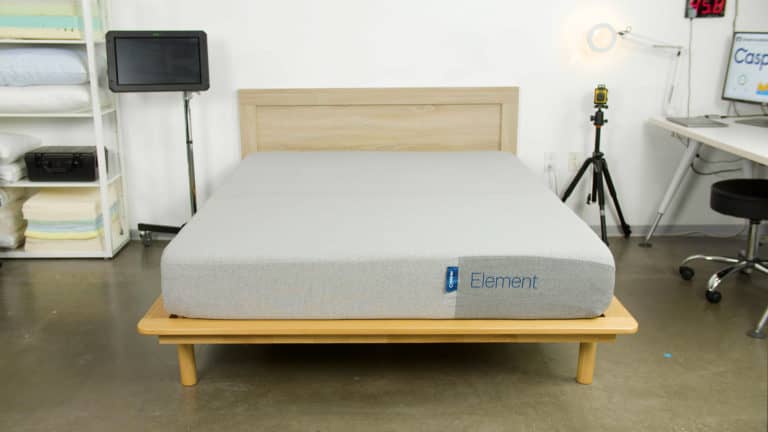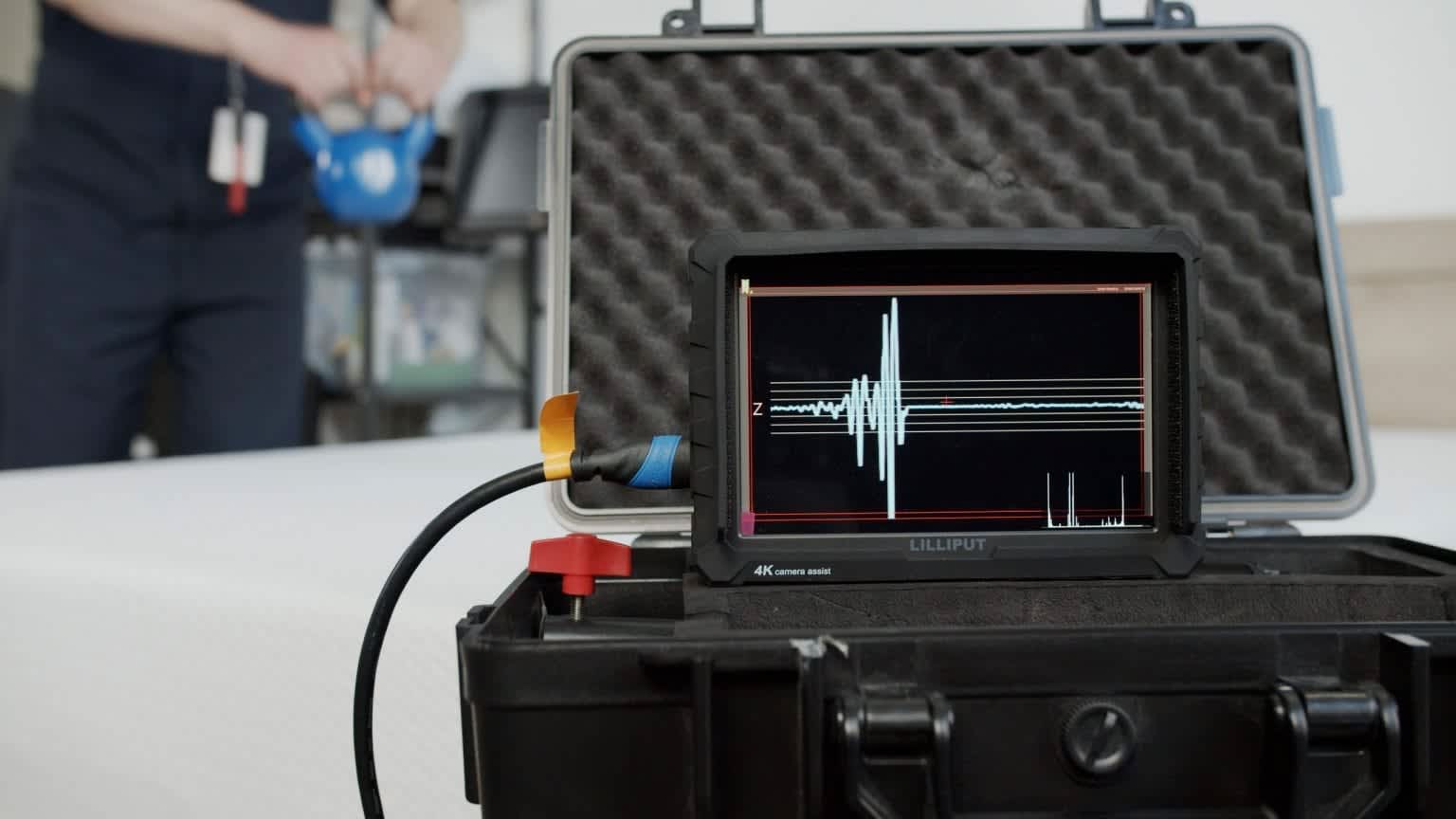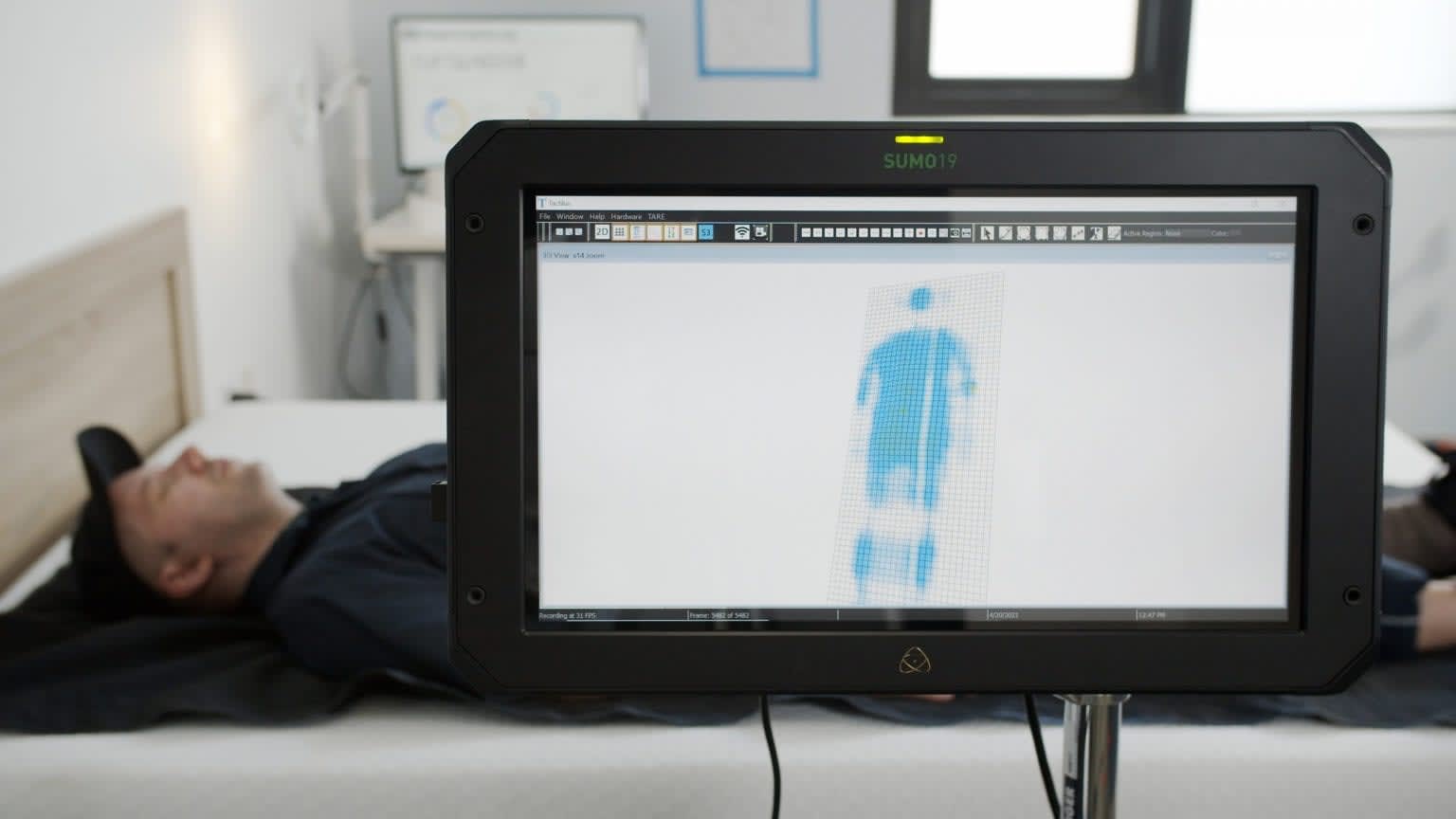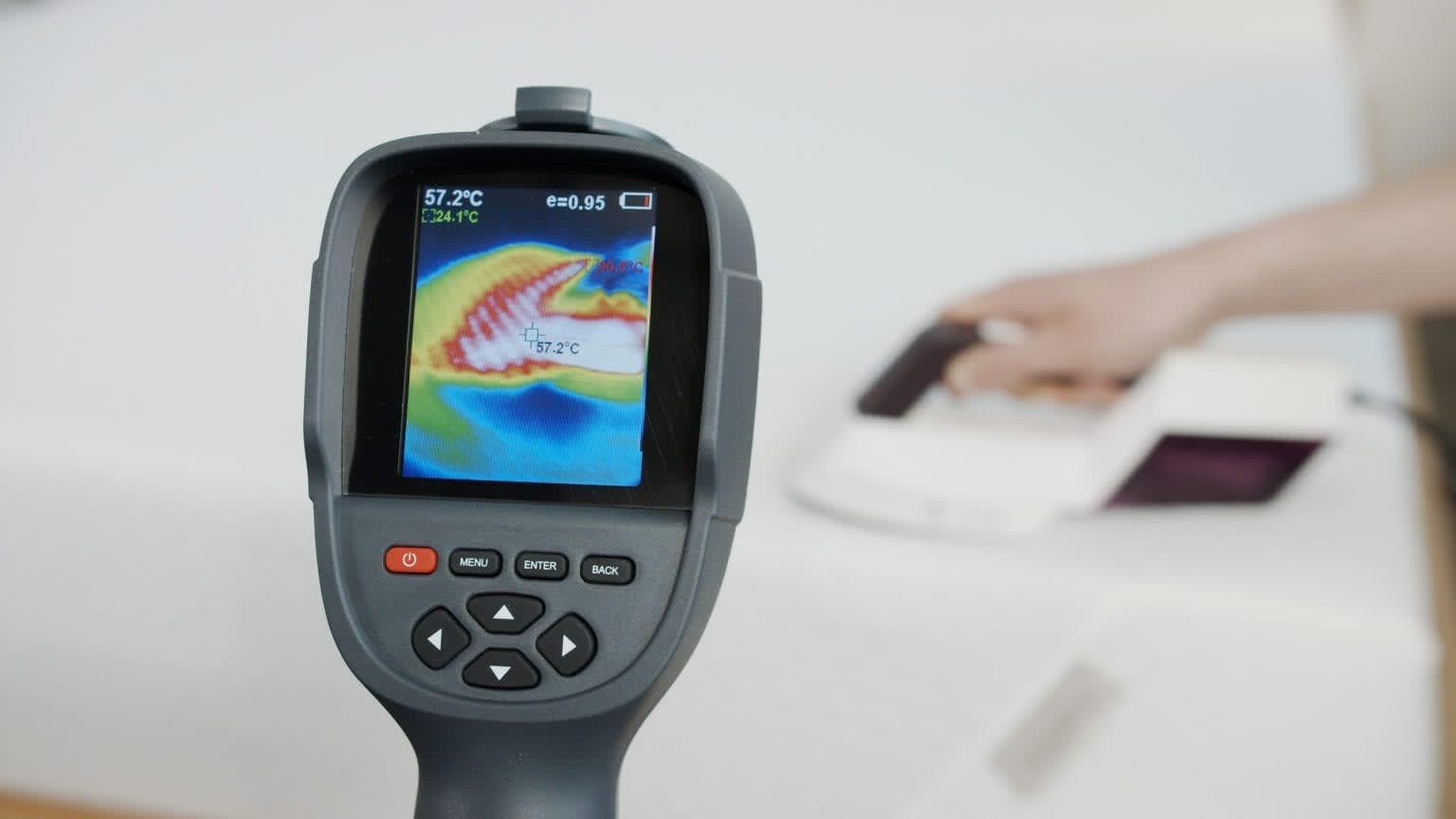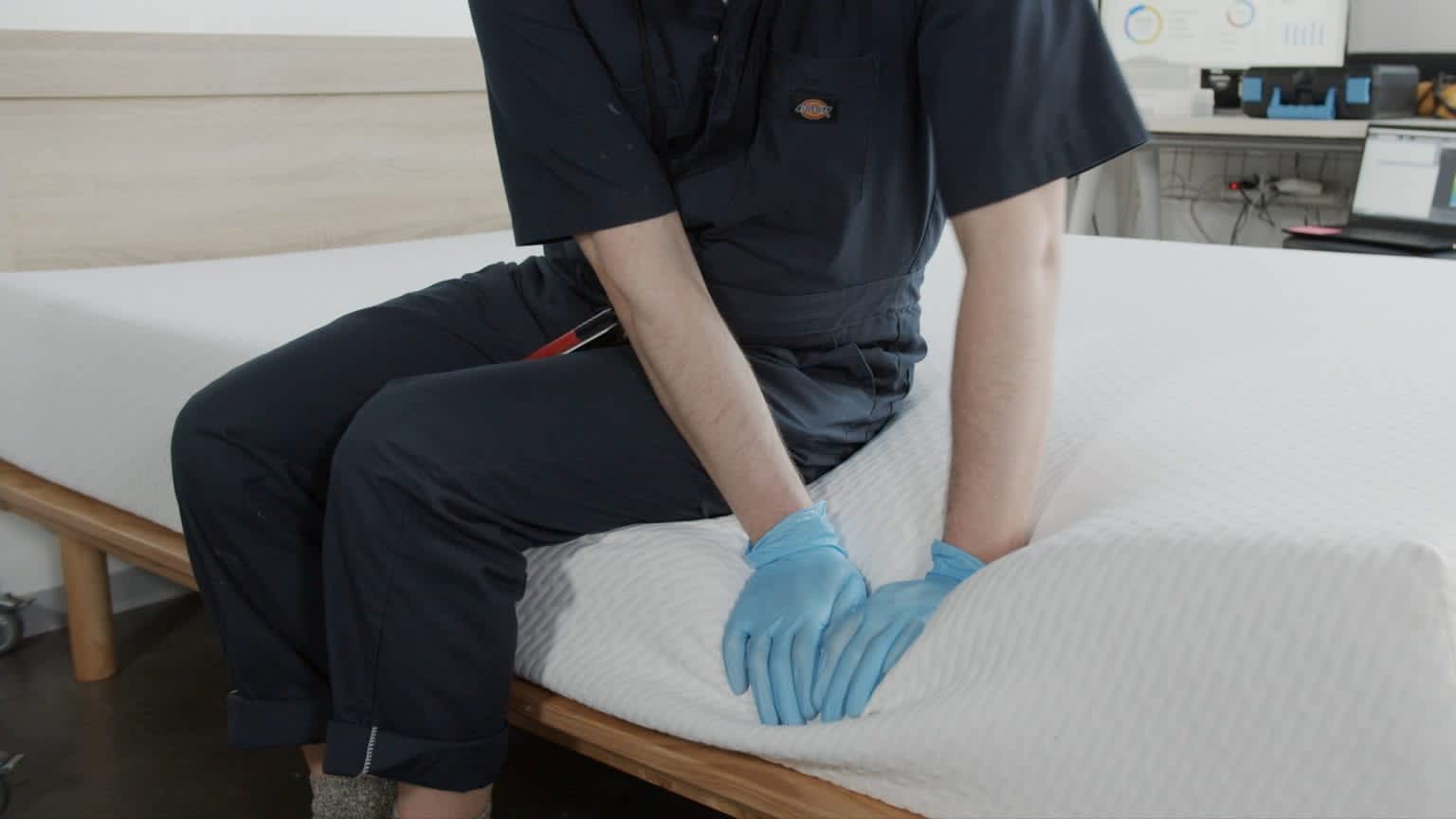Foam mattresses typically excel at isolating motion, and the Element is no exception. Sleepers should experience minimal to no vibrations when sleeping on the Element, since the two polyfoam layers absorb movement rather than transfer it. This may be ideal for couples with different sleep schedules or those who toss and turn.
While some sleepers may prefer a more responsive model, people who prioritize motion isolation could find the Element particularly suitable.
When you buy through our links, we may earn a commission. Products or services may be offered by an affiliated entity. Learn more.
Casper Element Mattress Review – Test Lab Ratings
Up to 60% off at Casper
Price Range: $495 – $895
Mattress Type: Foam
Firmness Options: Medium Firm (6)
Pros & Cons:
-
Casper’s most budget-friendly model
-
Medium-firm mattress that will appeal to most sleepers
-
Great for supporting pressure points around the hips and the shoulders
-
The conforming foam may not provide enough support for sleepers who weigh more than 230 pounds
-
The midsections of stomach sleepers who weigh more than 130 pounds could sink too deeply into the mattress
-
Those looking for a sleep surface they can use long-term may prefer a more durable model
Casper is a well-known mattress-in-a-box manufacturer that has been making mattresses since 2014. The Element is the company’s most budget-friendly model. It has a medium firm feel that should appeal to many sleepers, especially those who want a pressure-relieving sleep surface at an approachable price-point.
In addition to the Element, Casper sells three other mattress models: the Original, the Wave Hybrid, and the Nova Hybrid. The Original is the company’s flagship model, and it is available in all-foam and hybrid versions. The Wave Hybrid and the Nova Hybrid are designed for more advanced support and cooling. Shoppers can also buy bed frames, pillows, linens, and sleep accessories directly from Casper.
We’ll take a thorough look at the Element’s value, construction, materials, and performance. We’ll also offer guidance on how sleep position preferences and body weight affect the Element’s feel to help you decide if this mattress is a good fit for your sleep habits.
Let us help you find the perfect bed
Answer a few questions to find the right mattress for your unique needs
Casper Element Video Review
Watch the video below to see how the Casper Element performed when put to the test in our lab.
Sleeping Style and Body Weight
Side Sleepers
The Element closely conforms to the hips and shoulders of side sleepers, which helps alleviate pressure buildup. Side sleepers who weigh between 130 and 230 pounds may enjoy the best balance of cradling and support thanks to the model’s medium firm feel and polyfoam comfort system.
While sleepers who weigh under 130 pounds may still find the Element comfortable, it could be a bit too firm for some in this group. On the other hand, sleepers who weigh over 230 pounds are likely to benefit from a firmer mattress, as this model may be too soft to help them maintain good spinal alignment.
Back Sleepers
The Element’s medium firm feel is within the range preferred by many back sleepers. People who sleep on their backs typically benefit most from a mattress that offers even support. A mattress that’s too soft can allow a back sleeper’s midsection to sink in too far and make it difficult to maintain good posture, while one that’s too firm can create uncomfortable pressure points and lack support for the natural curvature of the lower back.
Back sleepers who weigh less than 230 pounds should enjoy a reasonable combination of pressure relief and support from the Element. The polyfoam core is supportive enough that sleepers in this weight range should feel like they’re sleeping on rather than in the mattress, which is what most back sleepers prefer. Additionally, the polyfoam comfort layer lets the hips sink in a little, cradling the sleeper’s lumbar region. However, sleepers who weigh more than 230 pounds are likely to find a firmer mattress more comfortable and supportive.
Stomach Sleepers
While the Element is comfortable for some stomach sleepers, many may need a firmer option to maintain their spinal alignment. Stomach sleeping is generally uncomfortable when a mattress doesn’t provide adequate support since the sleeper’s midsection can sink too deeply into the surface and undermine their posture.
For most stomach sleepers under 130 pounds, the medium firm feel of the Element supports the spine well and prevents the hips from sinking into the core. However, people who weigh more than 130 pounds may need a firmer model for sufficient midsection support.
Casper Element Mattress Coupon
Sleep Foundation Special Offer
Up to 60% off at Casper
Mattress Performance
In addition to the hands-on feedback from our team, we conduct a number of quantitative tests in our Test Lab. The below ratings are based on the experience of our testers.
Casper Element Mattress Review Breakdown
The Casper Element is an all-foam mattress that features two polyfoam layers. It has a medium firm feel that ranks as a 6 out of 10 on the firmness scale, which is within the range preferred by most sleepers.
Its comfort system consists of a 3-inch layer of proprietary polyfoam called AirScape. This foam contours to the body to relieve pressure buildup. It’s also engineered to allow hot air to escape through tiny perforations. A 6.5-inch polyfoam core provides a stable base for the comfort system.
In total, the Element measures 10 inches thick, making it an average-profile mattress that should be compatible with most standard sheet sets. A cover made from a blend of polyester, upcycled cotton, rayon, and Lycra wraps the mattress.
|
Firmness |
Medium Firm – 6 |
|---|---|
|
Mattress Type |
Foam |
|
Construction |
The Casper Element has an all-foam construction with two layers of polyfoam. The comfort layer cushions the surface and enhances airflow, while the core provides support. Cover Material:Polyester Blend Comfort Layer:3″ AirScape Polyfoam Support Core:6.5″ Polyfoam |
Mattress Prices and Sizing
The Element is the most affordable mattress in Casper’s lineup. It has a budget-friendly price-point that should appeal to shoppers looking for an excellent value. Shoppers can purchase this model in six standard sizes, including California king.
Sleep Foundation Special Offer
Up to 60% off at Casper
Trial, Warranty, and Shipping Policies
Casper sells the Element directly through its website and Amazon. This model is also available through select third-party retailers, including Target. People who prefer shopping at brick-and-mortar stores can see the Element in person at one of Casper’s storefronts or a partner location.
Shoppers who live in the contiguous U.S. and Canadian provinces qualify for free shipping on the Casper Element. Shipping is available for an additional fee to Hawaii, Alaska, Yukon, Nunavut, and the Northwest Territories. Casper ships via UPS, and customers typically receive their mattress within 3 to 9 business days.
The Element arrives compressed, wrapped in plastic, rolled, and sealed in a box. To set up your mattress, relocate the box to the room of your choice, unpackage the mattress from the box, unroll it, carefully remove the plastic, and allow the mattress to decompress.
Shoppers who live in the contiguous U.S. and Canadian provinces qualify for free shipping on the Casper Element. Shipping is available for an additional fee to Hawaii, Alaska, Yukon, Nunavut, and the Northwest Territories. Casper ships via UPS, and customers typically receive their mattress within 3 to 9 business days.
The Element arrives compressed, wrapped in plastic, rolled, and sealed in a box. To set up your mattress, relocate the box to the room of your choice, unpackage the mattress from the box, unroll it, carefully remove the plastic, and allow the mattress to decompress.
Shoppers in the contiguous U.S. and parts of Canada can pay an additional $149 fee for in-home setup and old mattress removal. Casper uses a partner service to deliver your mattress, set it up, and remove all packaging as well as your old mattress.
Shoppers who purchase directly from Casper qualify for a 100-night sleep trial that begins on the date of delivery. The new owner must try the Element for a minimum of 30 nights, after which they can return their mattress for a full refund of the purchase price. Returns are facilitated by Casper and carried out by a courier that removes your mattress. Your unwanted mattress will be donated or recycled if possible.
The Element carries a 10-year limited warranty that protects against certain defects, including indentations of more than 1 inch, cracks, and zipper defects. This warranty is non-transferable and does not apply to mattresses used for commercial purposes and those that have been abused, misused, or placed on an improper foundation. Additional terms and conditions also apply.

Still have questions?
Our product experts have extensive experience testing just about every sleep product on the market. Send an email to [email protected] or call us at (877) 672-8966 with your questions and we’ll help you find exactly what you’re looking for.

